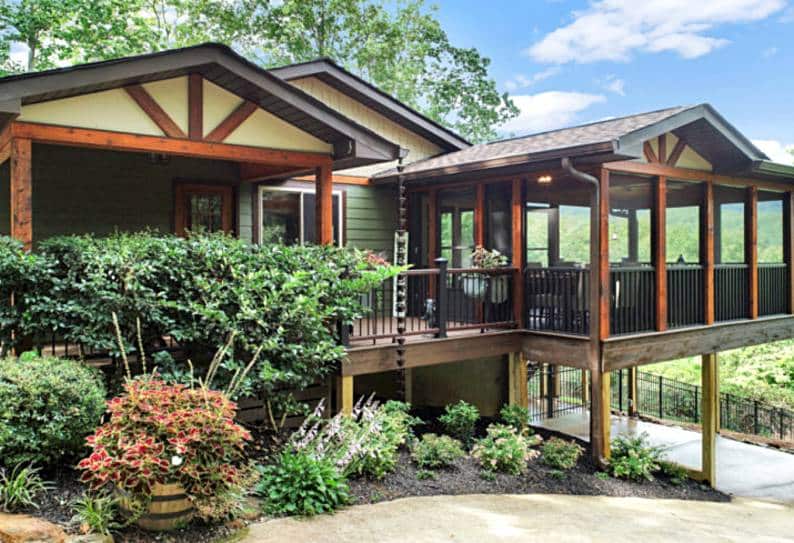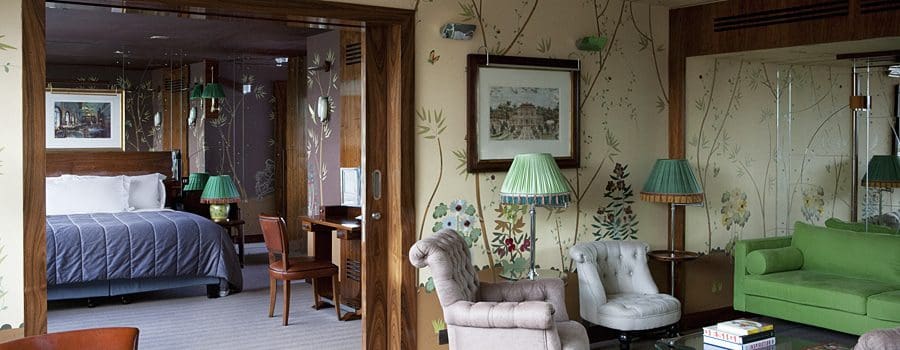words Al Woods
Creating a comfortable and stylish outdoor space requires thoughtful consideration, especially in regions where the mercury dips significantly. Cold climates bring unique challenges to decking materials, necessitating choices that withstand freezing temperatures, snow, and ice.
Durability, safety, and longevity become paramount. Leveraging the expertise of professional custom deck builders can be invaluable in this process, as they bring a wealth of experience in selecting and installing materials that thrive in harsh conditions.
In this comprehensive guide, we will navigate through a curated list of the top 10 decking options well-suited for colder weather, ensuring your outdoor space remains inviting year-round and is built to last with the precision and care that only experts can provide.
-
Cedar Wood: A Natural Beauty
Cedarwood transcends its function as a decking material, offering homeowners a unique opportunity to immerse themselves in the splendor of the natural world. Renowned for its rich, warm hues and an aroma that enchants the senses, cedar stands resilient in the face of harsh weather conditions. It possesses a natural ability to resist decay and deter insects, making it a reliable option even in the chill of cold climates.
Yet, the maintenance of cedar’s captivating beauty is not without effort. Consistent and thoughtful care, mainly through regular sealing, is paramount. This crucial step ensures protection against moisture, helping to preserve the wood’s vibrant appearance and structural integrity for years to come.
-
Redwood: Robust and Resilient
Like cedar, redwood decking brings a rich, natural aesthetic to outdoor spaces. Its innate resistance to moisture and decay makes it a formidable option for cold, wet climates. Redwood maintains its integrity against the elements but asks for something in return: consistent maintenance. Regular cleaning and periodic sealing are crucial to preserving its longevity and luster.
-
Pressure-Treated Wood: Economical and Enduring
Pressure-treated wood stands as a testament to human ingenuity. Through a specialized chemical treatment process, this decking material gains enhanced resistance to decay, insects, and the rigors of cold weather. It’s an economical choice, widely available, and ready to face freezing temperatures. Nevertheless, vigilance in maintenance is crucial. Warping and cracking can occur, so regular inspections and prompt repairs are necessary.
-
Hardwood Decking: Exotic and Robust
For those seeking the crème de la crème of decking materials, look no further than exotic hardwoods like Ipe and Cumaru. Dense, durable, and naturally resistant to the elements, these woods are tailor-made for cold climates. Their maintenance, however, is non-negotiable. Periodic oiling is required to maintain their rich color and longevity, ensuring they remain the centerpiece of your outdoor space.
-
Bamboo Decking: Sustainable and Sturdy
Bamboo decking has been gaining momentum in the decking world, celebrated for its sustainable properties and sleek, contemporary aesthetic. With proper treatment, bamboo is a robust contender against moisture and extreme temperature variations, positioning itself as a resilient option for colder climates.
However, it’s crucial to acknowledge that the quality of bamboo decking can vary significantly. Investing in high-quality, meticulously treated bamboo is essential to ensure optimal performance and longevity. Moreover, regular maintenance is a non-negotiable aspect of bamboo decking care, pivotal in maintaining its structural integrity and visual appeal over time.
-
Composite Decking: Low-Maintenance and Long-Lasting
Composite decking, a blend of wood fibers and plastic, has become a synonym for low-maintenance decking. It’s a practical choice for cold, damp environments and is resistant to moisture, rot, and pests. Is it staining or sealing? You can forget about those chores. This decking option asks very little of you, making it a popular choice for those looking to enjoy their outdoor space without the added work.
-
PVC Decking: Lightweight and Lifelong
PVC decking brings a lightweight yet durable solution for cold climates. It resists moisture quickly and maintains its structural integrity even in freezing temperatures. The bonus? It’s virtually maintenance-free. A simple cleaning routine is all it takes to keep this decking material looking its best, ensuring it stands the test of time.
-
Modified Wood: The New Age of Decking
Modified wood takes traditional lumber and enhances its durability and resistance to decay. The result is a decking material well-suited for cold climates, boasting stability and resistance to warping and cracking. While its maintenance requirements are minimal compared to traditional wood, a little care goes a long way in preserving its appearance and functionality.
-
Aluminum Decking: Premium and Practical
Aluminum decking might have a higher price tag, but its performance in cold climates is unmatched. This decking material resists corrosion and swiftly sheds snow and ice, demonstrating its built-to-endure quality. Maintenance is almost nonexistent, requiring only occasional cleaning to maintain its pristine condition. It’s a premium choice for those seeking longevity and style.
-
Stone Decking: Timeless and Tough
Stone decking offers a unique and durable option for outdoor spaces. Resistant to freezing and thawing cycles, it stands unfazed by the harshness of cold weather. While occasional cleaning and potential sealing are necessary to prevent stains and maintain their appearance, stone decking remains a low-maintenance, long-lasting choice.
Conclusion
Embarking on the journey of selecting the perfect decking material for cold climates can be daunting, but armed with knowledge and options, you can make an informed decision. Each material presents a unique set of pros and cons, catering to various needs and preferences. Remember, consulting with professionals ensures a sound choice and installation, bringing your outdoor vision to life. Embrace the cold and create an outdoor sanctuary that lasts.





